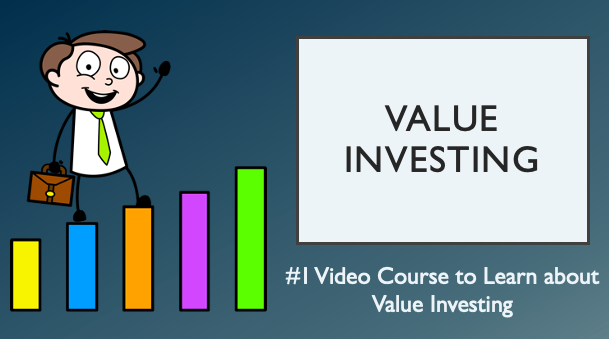Book Summary of One Up on Wall Street
by Peter Lynch

What is this book about?
"One Up On Wall Street" by Peter Lynch is a guide for individual investors on how to make informed and successful stock market investments. Peter Lynch, a renowned fund manager, advocates that average investors can outperform Wall Street professionals by leveraging what they already know. By observing the companies around them and doing some basic research, individuals can identify "tenbaggers" (stocks that increase tenfold in value) before professional analysts do. Lynch emphasizes that investment opportunities are abundant in everyday life and that ordinary people can achieve substantial returns by staying informed and patient.
Who should read the book?
This book is ideal for individual investors, both beginners and experienced, who want to take control of their financial future by making informed decisions in the stock market. It's particularly useful for those who believe that stock market success is out of reach and want to learn how to leverage their own knowledge and observations to identify profitable investment opportunities. Financial professionals might also find Lynch's insights valuable, though the primary audience is the everyday investor.
10 Big Ideas from the Book:
-
Use What You Know: Lynch advocates using your existing knowledge and daily experiences to find potential investment opportunities before they become widely recognized by Wall Street.
-
Research is Key: While intuition and observation are important, conducting thorough research into a company’s financial health and business model is crucial.
-
Focus on Long-term Growth: Lynch encourages investors to think long-term, suggesting that investments held for 5-15 years will generally yield the best returns.
-
Ignore Market Noise: Investors should not be swayed by market fluctuations or media speculation about the stock market but should instead focus on the fundamentals of their investments.
-
Look for Tenbaggers: These are stocks that have the potential to increase tenfold in value. Identifying and holding onto these stocks can significantly enhance your portfolio's performance.
-
Invest in What You Understand: Lynch advises against investing in companies or industries that you do not understand, as this increases the risk of making poor decisions.
-
Categorize Your Investments: Lynch categorizes companies into different groups such as slow growers, stalwarts, fast growers, cyclicals, turnarounds, and asset plays, each requiring a different investment approach.
-
Know When to Sell: Understanding when to exit a position is as important as knowing when to buy. Lynch provides guidelines on when to sell stocks based on their performance and potential.
-
Don’t Overreact to P/E Ratios: While Price-to-Earnings (P/E) ratios are important, they shouldn’t be the sole factor in deciding whether to invest in a stock. Context is crucial.
-
Diversify, But Not Too Much: Lynch supports diversification but warns against over-diversifying, which can dilute the potential returns from your best ideas.
Summary of One Up On Wall Street by Peter Lynch
"One Up On Wall Street" is an influential guide for individual investors, providing practical advice on how to identify winning stocks using everyday observations and fundamental research. Peter Lynch shares his experiences and insights from his time managing the Fidelity Magellan Fund, emphasizing that with some basic research and a keen eye, ordinary investors can achieve extraordinary returns in the stock market.
Key Insights:
-
Invest in What You Know:
- Lynch advocates that investors have a natural advantage by investing in companies they are already familiar with. If you notice a company doing well in your daily life—whether it's a product you love or a service you find indispensable—it might be worth investigating as a potential investment.
-
The Importance of Research:
- While your observations are important, they should be followed by diligent research. Analyze the company's financial health, business model, and market position before investing. This research helps to confirm whether the company is truly a good investment opportunity.
-
Long-term Focus:
- Lynch encourages investors to adopt a long-term perspective. The stock market is unpredictable in the short term, but over five to fifteen years, well-chosen stocks typically increase in value significantly.
-
Categorization of Stocks:
- Lynch categorizes companies into six types: slow growers, stalwarts, fast growers, cyclicals, turnarounds, and asset plays. Each category requires a different strategy and has its own risk profile.
-
Tenbaggers:
- A key concept in the book is the "tenbagger," a stock that increases in value tenfold. Lynch believes that finding and holding onto tenbaggers can dramatically improve the performance of a portfolio.
-
Ignore Market Noise:
- Market fluctuations and media hype should not dictate your investment decisions. Lynch stresses the importance of staying focused on the fundamentals of your investments rather than getting swayed by market sentiment.
-
Patience and Discipline:
- Successful investing requires patience and discipline. Lynch advises ignoring short-term market trends and holding onto stocks for the long haul to realize their full potential.
-
Know When to Sell:
- Lynch provides guidelines on when to sell stocks. Key signals include a company's fundamentals deteriorating, or the stock price reaching an overvalued level relative to its growth potential.
-
Understand Financial Ratios:
- Understanding key financial ratios is crucial in evaluating a company's health and growth prospects. Lynch emphasizes the importance of ratios like the Price-to-Earnings (P/E) ratio, among others.
-
Diversification:
- While Lynch advocates for diversification to manage risk, he warns against over-diversification, which can dilute the potential gains from your best investment ideas.
Relevant Numbers:
- Tenbaggers: Lynch stresses the importance of finding "tenbaggers," or stocks that increase tenfold. A single tenbagger can have a profound impact on a portfolio's overall performance.
- Long-term Performance: Over 5 to 15 years, well-chosen stocks can significantly increase in value, often by several multiples of the original investment.
- Portfolio Composition: Lynch mentions that having six out of ten successful stocks in a portfolio can produce satisfying returns. The goal is not to be right every time but to have a few big winners that offset the losses.
Key Ratios to Remember:
-
Price-to-Earnings (P/E) Ratio:
- P/E Ratio = Price per Share / Earnings per Share (EPS)
- A lower P/E ratio may indicate that a stock is undervalued, while a higher P/E ratio might suggest overvaluation. Lynch warns against over-reliance on this ratio and advises looking at it in the context of the company’s growth prospects.
-
Price-to-Book (P/B) Ratio:
- P/B Ratio = Market Value per Share / Book Value per Share
- This ratio compares a company's market value to its book value, indicating how much shareholders are paying for the company's net assets. A lower P/B ratio could indicate undervaluation.
-
Debt-to-Equity (D/E) Ratio:
- D/E Ratio = Total Liabilities / Shareholders’ Equity
- This ratio measures a company's financial leverage. A lower D/E ratio generally suggests a more financially stable company, while a higher ratio could indicate higher risk.
-
Dividend Yield:
- Dividend Yield = Annual Dividends per Share / Price per Share
- This ratio shows how much a company pays out in dividends relative to its stock price. It’s a key measure for investors looking for income in addition to capital appreciation.
-
PEG Ratio:
- PEG Ratio = P/E Ratio / Annual EPS Growth
- The PEG ratio considers a company’s earnings growth, making it a more comprehensive measure than the P/E ratio alone. A PEG ratio below 1 might indicate undervaluation, while above 1 could suggest overvaluation.
Conclusion:
One Up On Wall Street is an essential read for individual investors looking to gain an edge in the stock market. Lynch's approach is practical and accessible, encouraging investors to use their observations and common sense to make smart investment decisions. By following Lynch's advice, investors can potentially outperform the market and achieve significant long-term gains.
Which other books are used as reference?
In "One Up On Wall Street," Peter Lynch references his own previous works, including "Beating the Street" and "Learn to Earn." He also draws on his extensive experience managing the Fidelity Magellan Fund, though specific external books are not heavily emphasized as references throughout the text. Instead, Lynch primarily shares insights and strategies based on his personal experiences and successes in the investment world.
Browse Summaries of Top Investing books!
You may also like the below Video Courses



